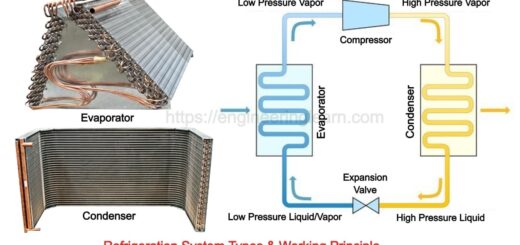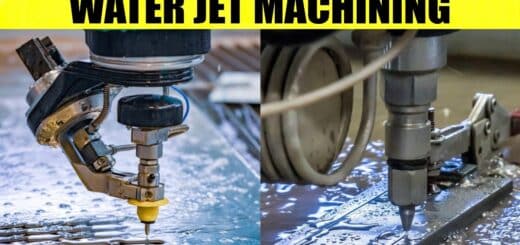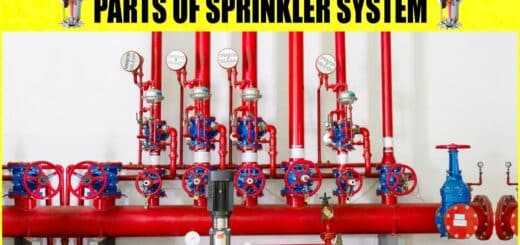15 Parts of Drill Press and Their Function [Complete Guide]
![15 Parts of Drill Press and Their Function [Complete Guide]](https://engineeringlearn.com/wp-content/uploads/2023/07/Parts-of-Drill-Press-1024x539.jpg)
Introduction
15 Parts of Drill Press and Their Function [Complete Guide]: – Drill press is perhaps one of the best tools that are utilized to provide efficient types of services and assistance to individuals. Not at all like hand drills, the orientation and the location of the holes are thought about precisely. Every one of the functional capabilities and the features of the drill press are performed well, in the event that every part of the tools are in the right condition and working properly. Using the drill press is extremely simple, assuming you know all the parts of the tool and their functional capabilities.
What is a Drill Press?
The Drill Press is one of the most often utilized machine tools. They are utilized primarily for drilling holes yet reaming, countersinking, and boring can likewise be accomplished with the drill press. The drill press is a mechanized and motorized device that is designed or intended to drill holes in wood, metal, or plastic. Like a handheld drill, drill presses use different sorts of bits to make holes of various diameters. However, not like a handheld drill, drill presses are stationery material or bench-top machines.
In case you need a drilling tool only for small home fixes or repairs and at some point for carpentry projects, a drill press no doubt isn’t actually for you. However, on the off chance that you might want a drilling press working with wood or metal, a drill press will make it simpler to bore precise holes, countersink, or counter-bore those holes, and use sanding attachments. The primary reason you ought to utilize a drill press is for precision and accuracy. When utilized in the correct manner, a drill press is far more secure to use than a normal drill.
For a situation, on the off chance that your tool isn’t working as expected and having some issues you can find out easily that what portion of the tool isn’t working as expected or creating problems. You can de-attach that piece of drill press and further replace it with the upgraded one. This is the most effective way to operate your drill press in a quick and decent way. The best drill press for your workshop relies upon the projects you expect to do and how regularly you’ll utilize it. Drill presses are understandably less portable or versatile than handheld drills because of their weight and size.
Parts of Drill Press / Parts of Drill Machine
In the event that you don’t have an idea about the parts of the drill press and their operations then you will feel problems to figure out the working issues in the drill press.
Hence below we will examine each part of the Drill press and its functional capabilities in a brief way: –
- Head
- Motor and Belt
- Power Transmission
- Depth Stop
- Spindle
- Quill
- Adjustable Stop
- Feed Lever
- Chuck Arbor
- Chuck
- Column
- Table
- Fence
- Base
- Power On/Off
1. Head: ( Parts of Drill Press )
The head part or portion of the drill press houses the spindle as it is joined or associated at the top region of the spindle. It is responsible for the spindle movement on the grounds that the spindle can move upward or downward. Its essential function is to raise and lower the drill bit to the desired depth and to hold the bit firmly in place while it drills. It furthermore houses the safety shield, quill lock, and various compartments and switches utilized to control the drill speed and feed rate.
2. Motor and Belt: ( Parts of Drill Press )
On the off chance that you know about the manual drill machines, you would understand the significance of an electric drill press. A manual drill machine was efficient, yet it took more time than an electric drill to make ideal holes on a workpiece, particularly in the industrial demanding hole-making jobs.
With the invention of an electric drill press, things have turned more efficient recently. Thus, a motor is the main power unit, which fuels the electric drill operation. It’s for the most part attached to the upper back of the machine. A motor can be of different powers relying upon the kind of drill bits you’re utilizing and the sort of drilling you plan to do. You might change the drill press’ speed by changing the location of the belts on the pulleys.
3. Power Transmission: ( Parts of Drill Press )
It is vital and necessary for the drill press that is utilized to transmit the power for its working is known as the power transmission. An electric motor supplied the power for power transmission. The process of transmission happens with the assistance of the v-bolt and the pair of pulley stacks inverse to one another. The speed of the spindle is fixed or controlled with the assistance of the pulley stacks. The functions of the parts of the drill press are vital in light of the fact that the functionalities of all these parts are reliant upon one another.
4. Depth Stop: ( Parts of Drill Press )
The adjustable depth stop permits holes to be drilled to a specific depth. Whenever being used, it permits the quill to be stopped at a point along its travel. Depth stops, in like manner called drill stops, are collars that fit around your drill bit. They permit you to drill a specific depth and prevent the drill from drilling any deeper.
5. Spindle: ( Parts of Drill Press )
The spindle is the pivoting or rotating shaft that the drill chuck is mounted on. The spindle of the tool is held with the assistance of an arm that is gripped with the column. High carbon chromium steel or steel combinations are utilized to make the shaft. At the base side of the spindle, a chuck is placed and this chuck is utilized to hold the drill bit in place.
The speed and power of the spindle are determined by the motor, which is usually adjustable by turning a knob or switch. To ensure exact and precise drilling, the spindle is mounted onto the drill press and properly aligned with the goal that the drill bit will be in the exact center of the material being drilled.
6. Quill: ( Parts of Drill Press )
The Quill is part of the drill press that raises and brings the spindle down to the ideal drilling depth. It is typically within the spindle itself and is lifted or brought down utilizing a hand crank. The quill is normally operated by a hand crank or a lever that is located at the base of the drill press. Contingent upon the drill press model, the quill can have a variety of feed rates, which can be adjusted to fit the user’s needs and requirements.
7. Adjustable Stop: ( Parts of Drill Press )
An adjustable stop is a gadget used to help more precisely guide when and at what depth to stop the drill bit. A knob is utilized to adjust or change the stop and assists with ensuring that items are drilled as per the specification.
8. Feed Lever: ( Parts of Drill Press )
The feed handle controls the drill’s upward movement, in this way deciding how fast and how much pressure the drill experiences the workpiece. Some drill presses don’t have a feed handle and may have a automatic feed or are programmable to bring down the drill bit automatically at a set rate or pressure.
9. Chuck Arbor: ( Parts of Drill Press )
Chuck arbors are broadly utilized to connect or interface Drill chucks to a machine’s spindle. This is often a tapered press connection, and that implies the chuck is just held in place by friction. The arbor is made of steel. In many chucks, the tool or workpiece is held in place of jaws.
10. Chuck: ( Parts of Drill Press )
The chuck holds the tooling. It typically has three jaws and is known as a geared key meaning it utilizes a geared key to tighten the tooling. Keyless chucks may likewise be found on drill presses. The chuck is moved in a downward direction through a basic rack-and-pinion gearing worked by the feed wheel or switch. The feed lever is returned back to its normal or expected position through a coil or curl spring. You can lock the feed as well as pre-set the depth to which it can travel.
11. Column: ( Parts of Drill Press )
The column of the drill machine is utilized to tie the table. The column is the drill press’ backbone, keeping every one of the parts intact. This part should be sturdy and precise since the accuracy of any work done utilizing the drill press relies upon this to a great extent.
12. Table: ( Parts of Drill Press )
The table is connected or associated with the column and is normally moved up or down to suit the work at hand. The table is likewise one of the most amazing pieces of the drill press. This is utilized to hold the working or functioning material in place. It is changed or adjusted precisely at 90 degrees to the column. The table remains fixed or stationary during operation, with the workpiece securely clamped to it. The drill bit is moved into the workpiece, regularly utilizing the feed lever.
13. Fence: ( Parts of Drill Press )
A fence transforms or changes your drill press into an accuracy woodworking device. Some drill presses accompany a fence, so don’t. A shop-made fence can undoubtedly be made to increment functionality and on account of drilling utilizing large diameter drills, safety. One of the most incredible features of Fence is dust collection.
14. Base: ( Parts of Drill Press )
The base of the drill press is comprised of steel or iron. The fundamental functional capability of the base of the drill press is utilized to support the column and stabilize it. Contingent upon the design and size of a drill press, this base is mounted on a workbench, a pedestal as well as a floor.
15. Power On/Off: ( Parts of Drill Press )
The switch powers or controls the motor on and off. It is normally located on the front of the head in an effectively accessible location.
Conclusion
Drill presses are exceptionally flexible tools and a staple in many workshops. Most machine shops are equipped with no less than one pedestal-type drill press. These machines are utilized to drill holes in wood, plastic, aluminum, metal, steel, and most other engineering materials. Drill presses for leisure activity use or simple use by experts in general workshops typically have just a single spindle. Be that as it may, drill presses can be custom-built for explicit drilling operations.
To avoid mishaps and make work simpler, the workpiece is generally clamped in a vice on the table of the drill press. The main advantage of a drill press is its power and precision. Using a drill press is generally faster than drilling manually, particularly for projects that require a lot of repetitive drilling. High-speed, automated drill presses further decline working time without forfeiting quality and accuracy.
Image Source: – penntoolco













